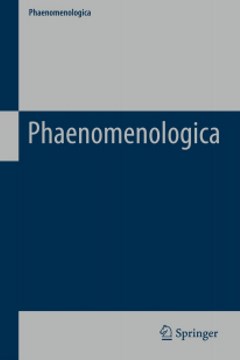Husserl's early treatments of intersubjectivity
pp. 49-89
Abstrakt
The agenda of the Phenomenological Movement, as we saw in the last chapter, came together in Munich around the investigation of three nested phenomena: motivation, empathy, and the i. Research inspired by Theodor Lipps gave Husserl the questions and the terminology upon which he would build his early investigations of intersubjectivity. Although he did not reside in Munich, Husserl was in close contact with colleagues there before the First World War. Reinach came from Munich to work as ">Privatdozent at Göttingen under the sponsorship of Husserl, whom the younger phenomenologists called der Meister. 1 Husserl was productive in his publications, prolific in his private Forschungs-mansckripte, and prodigally generous with his junior colleagues. First at Göttingen and later at Freiburg, Husserl freely shared the fruits of his research with his advanced students and he delighted in their original implementations of the phenomenological methods that he had pioneered.
Publication details
Published in:
Sawicki Marianne (1997) Body, text and science: The literacy of investigative practices and the phenomenology of Edith Stein. Dordrecht, Springer.
Seiten: 49-89
DOI: 10.1007/978-94-011-3979-3_2
Referenz:
Sawicki Marianne (1997) Husserl's early treatments of intersubjectivity, In: Body, text and science, Dordrecht, Springer, 49–89.







